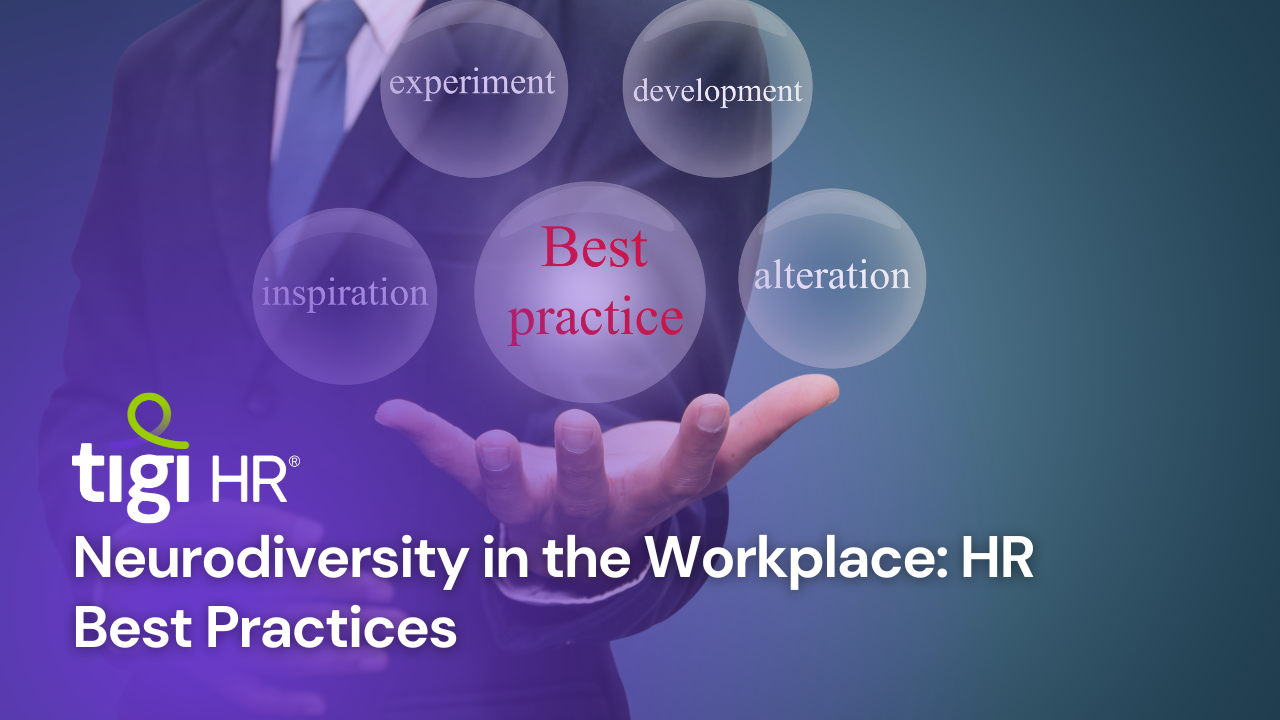In today’s rapidly evolving business landscape, diversity and inclusion have become integral to fostering innovation and ensuring a thriving work environment. One facet of diversity that often goes overlooked but holds immense potential is neurodiversity. Neurodiversity recognizes and values the unique talents and perspectives of individuals with neurological differences, such as autism, ADHD, and dyslexia. This article explores the importance of neurodiversity in the workplace and offers HR best practices to create an inclusive environment.
Understanding Neurodiversity
Neurodiversity is a concept that champions the idea that neurological differences should be recognized and respected just like any other form of diversity. People with neurodiverse conditions often possess exceptional skills and talents, such as heightened attention to detail, pattern recognition, and problem-solving abilities. However, they may also face challenges in social interactions, communication, and sensory processing.
The Benefits of Neurodiversity in the workplace
Embracing neurodiversity in the workplace can bring several benefits. Firstly, it enhances creativity and innovation. Neurodivergent individuals often approach problems differently, offering fresh perspectives and solutions that can lead to breakthroughs.
Secondly, it expands the talent pool. By actively recruiting and accommodating neurodivergent individuals, companies access a previously untapped source of highly skilled workers.
Thirdly, it improves employee morale and engagement. When employees see their workplace as inclusive and supportive, they are more likely to feel valued and motivated, leading to increased productivity.
HR Best Practices for Embracing Neurodiversity
Awareness and Training: HR departments should initiate neurodiversity training programs to educate employees about various neurodiverse conditions. This helps create a more inclusive and empathetic workplace.
Recruitment: Implement a more inclusive recruitment process by partnering with organizations that specialize in placing neurodivergent individuals. Tailor job descriptions and interview processes to accommodate diverse communication styles and preferences.
Accommodations: Be flexible in accommodating the needs of neurodivergent employees. This may involve providing sensory-friendly workspaces, allowing for flexible schedules, or offering assistive technology.
Mentoring and Support: Establish mentoring programs to pair neurodivergent employees with experienced colleagues who can offer guidance and support. Create a culture where asking for help is encouraged and not stigmatized.
Communication: Foster clear and open communication channels. Neurodivergent individuals may benefit from written instructions or alternative communication methods. Ensure that managers and colleagues are aware of these preferences.
Sensory Considerations: Create an environment that takes sensory sensitivities into account. Simple adjustments like reducing fluorescent lighting or providing noise-cancelling headphones can make a significant difference.
Feedback and Evaluation: Regularly seek feedback from neurodivergent employees to understand their needs better. Use this feedback to refine HR practices and policies continually.
Promote Inclusivity from the Top: Leadership plays a crucial role in promoting inclusivity. Ensure that executives actively support neurodiversity initiatives and communicate their commitment to the entire organization.
Measuring Success
To gauge the success of neurodiversity initiatives, HR departments can establish key performance indicators (KPIs). These may include retention rates, employee satisfaction scores, and the number of neurodivergent employees hired and promoted. Regularly assess progress and make adjustments as necessary to ensure continuous improvement.
Conclusion on Neurodiversity in the Workplace
Neurodiversity in the workplace is not just a trend but a movement towards a more inclusive, innovative, and successful future. HR departments play a pivotal role in championing neurodiversity by implementing best practices that accommodate and support neurodivergent individuals. By recognizing the value of diverse perspectives and talents, companies can create a work environment where everyone can thrive.
In conclusion, embracing neurodiversity is not only a moral imperative but also a strategic advantage in today’s competitive business landscape. By implementing HR best practices that prioritize inclusivity, companies can harness the full potential of their neurodivergent employees and drive innovation and success. Embrace neurodiversity today, and your workplace will become a beacon of diversity and excellence.
Getting a new job doesn’t have to take forever. You just need the right strategy in place. Follow the five expert tips here and you should be well on your way to snagging the job you’ve always wanted.
Find trusted recruitment agencies : Click here





